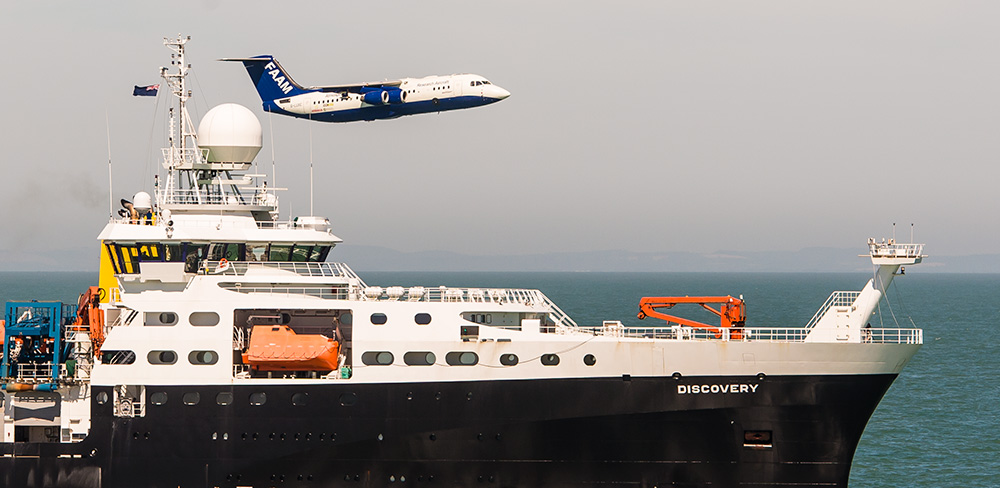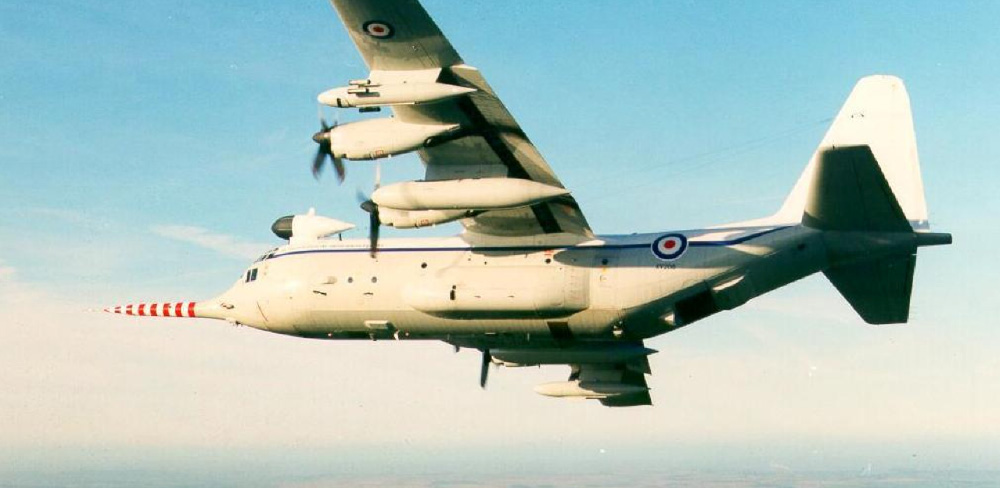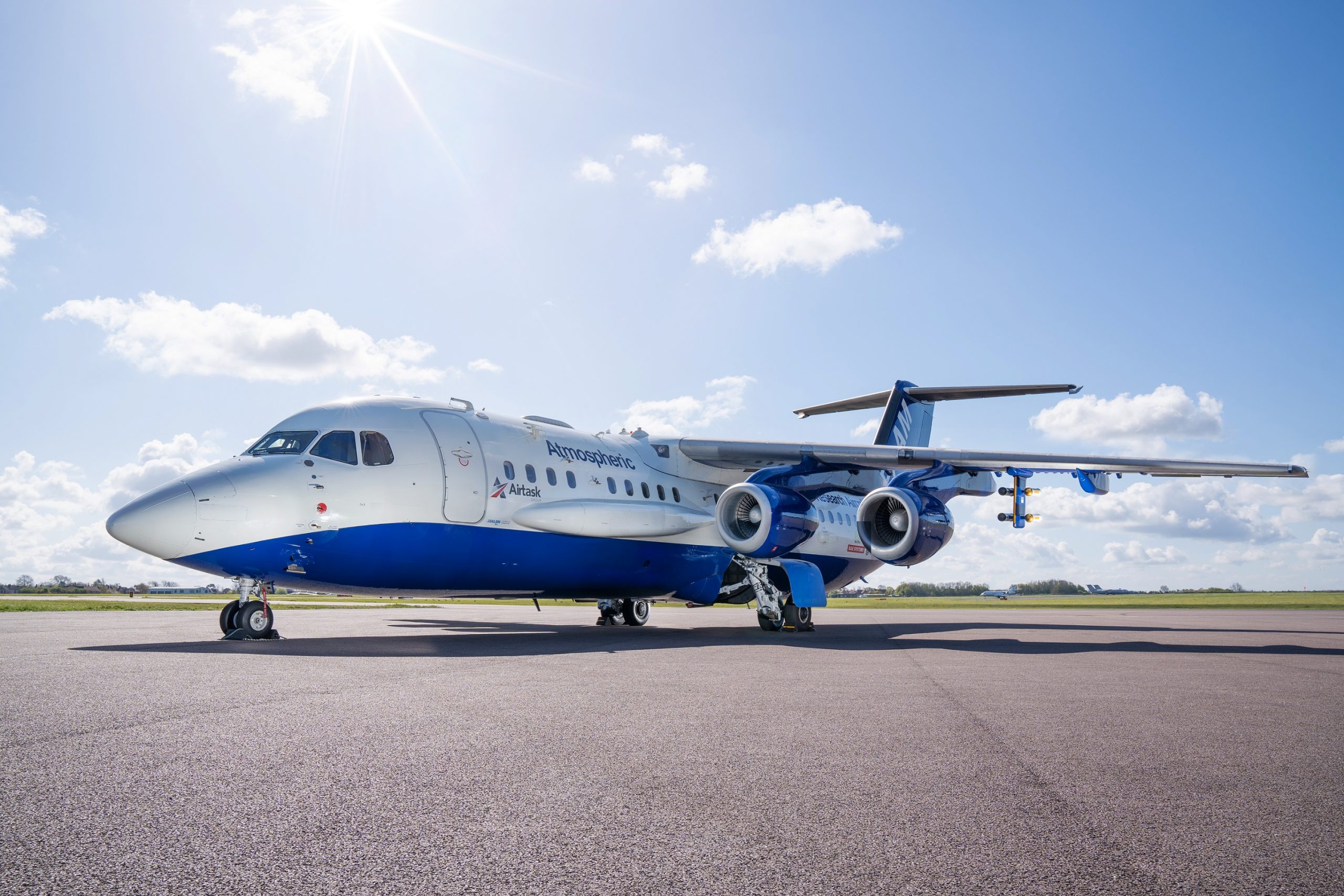In August 2001, The Facility for Airborne Atmospheric Measurements was established by the Natural Environment Research Council, the UK Met Office, and the UK university community.
The contract for the aircraft, designated to be a BAe-146-301 was placed with BAE Systems in December 2000. The contract provided ten years of operation flying which started in January 2005 after work on the aircraft was complete. The University of Manchester Institute of Science and Technology managed the contract for the preparation of the aircraft, and the University of Cambridge managed the procurement of new instruments.
Following the closure of the RJX production line at Woolford, BAE Systems sub-contracted the operation phase of the contract to Airtask, who are familiar with specialist aircraft operations. DirectFlight operated in partnership with Avalon Aero for the provision of aircraft maintenance and modification.
In 2010 the Atmospheric Research Aircraft reached the landmark of 500 flying missions.

In November 2012, The Natural Environment Research Council agreed to purchase the Atmospheric Research Aircraft from BAE Systems. This arrangement was part of a new contract arrangement between the Natural Environment Research Council, The UK Met Office and BAE Systems, which extended the original ten year contract for a further five years, leaving the basic operational infrastructure unchanged. Transfer of ownership to the Natural Environment Research Council and a new support contract were finalised in March 2014.
The Atmospheric Research Aircraft now operates about 400 flying hours each year, visiting most parts of the planet and obtaining data for a wide range of science. The Facility for Airborne Atmospheric Measurements employs 17 full time staff and routinely operates for diverse groups of scientists at UK universities and the Met Office.

From 1972 to 2001, the UK Met Office operated the Meteorological Research Flight which was a precursor for the Facility for Airborne Atmospheric Measurements. The Meteorological Research Flight performed a wide variety of atmospheric measurements using a Hercules C-130 aircraft.
A large volume of the C-130 flying hours were carried out on detachments away from the home base, originally Farnborough then later Boscombe Down. The C-130 was heavily modified for atmospheric measurements and like the new Atmospheric Research Aircraft it was one of the most sophisticated flying laboratories for it’s time. The long striped probe on the nose allows sensitive instruments to make measurements, for example of turbulence, in a region external to the aircraft. This feature gave the aircraft it’s affectionate nickname, Snoopy.
More information about the C-130 and it’s modifications is available from the Centre for Environmental Data Analysis. To reduce operating costs and to better serve the UK atmospheric science community, the Met Office and the Natural Environment Research Council joined forces to establish a joint facility for airborne atmospheric measurements facility in 2001.

Flying to the future
In 2016 the Facility for Airborne Atmospheric Measurements became the FAAM Airborne Laboratory. The aircraft livery was updated and the team moved into new facilities at Cranfield University.
The FAAM Airborne Laboratory’s research aircraft is owned by UK Research and Innovation and the Natural Environmental Research Council. It is managed through the National Centre for Atmospheric Science, and leased through the University of Leeds.
The aircraft is supported, modified and upgraded by BAE Systems, operated by Airtask Group, and maintained by Avalon Aero. It is hangared in Bedfordshire, with Cranfield Airport at Cranfield University.
In 2021, the FAAM Airborne Laboratory received a further £49 million investment to upgrade the facility and reduce its environmental impact. Running until 2026, the Mid-Life Upgrade Programme aims to keep the research aircraft facility operational out to 2040.
Up Next…
Meet the FAAM stakeholders… Read More
